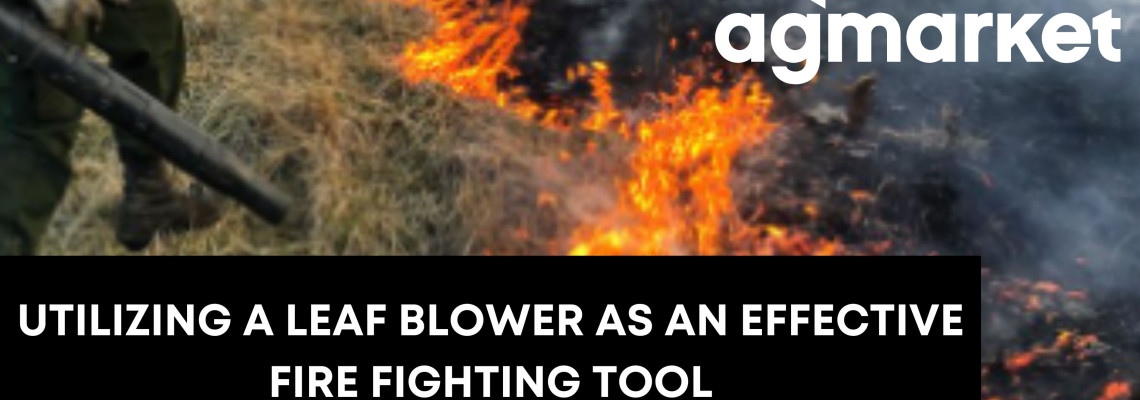Firefighting with a leaf blower

Utilizing a leaf blower as an effective firefighting tool
In South Africa, dry and windy veld conditions can create
the perfect environment for runaway veld fires. It is imperative for those
living in rural and grassland areas to create firebreaks to help stop the
spread of veld fires. While leaf blowers are commonly associated with yard
maintenance, these blowers can also serve as a valuable asset in combating
grass field fires. In this article, we will look at the techniques to harness the
power of a leaf blower to safely burn fire breaks and fight runaway veld fires.
Before employing a leaf blower as a firefighting tool, it is
important to ensure you have the necessary protective gear, including
fire-resistant clothing, gloves, goggles and a dust mask. The goggles are one
of the most important pieces of equipment here as you will be blowing onto
burning matter which might create embers blowing around which can land in, and
damage your eyes.
Burning a firebreak with your leaf blower
Before initiating any fire break burning, carefully evaluate
the area and understand the potential fire risks. Keep in mind the vegetation
density and prevailing wind direction. Clear the perimeter by removing any
combustible materials such as loose dry grass, leaves, branches and any other
combustible materials within the desired fire break area. Direct the airflow
from the leaf blower towards the ground, systematically blowing away debris to
create a cleared path before you burn the fire break.
Ensure that the fire break is wide enough to impede a veld
fire’s progress. A minimum width of 3.5 meters is generally recommended, but
adjust this based on your local fire conditions and regulations.
Fighting the fire
Position yourself upwind of the fire and aim the nozzle of
the leaf blower toward the flames. By blowing air from this direction, you can
help control its spread and push it away from the desired areas. As a rule of
thumb, always blow the air towards the blackened area of the fire break and
blow loose, still burning materials into the black as well.
The powerful wind force created by the leaf blower can
smother the fire. This technique involves directing the airflow toward the base
of the fire, aiming to disrupt the oxygen supply and deprive the flames of fuel,
effectively smothering the fire.
Be very careful though - the blower can also be used to accelerate
the rate at which something burns. If there is a patch of denser vegetation
that will smoulder for a long time instead of burning away immediately, you can
use your leaf blower to accelerate the rate at which the material burns.
Please keep in mind that leaf blowers are less effective in
fires with tall and hot flames as it does not have the reach that a
firefighting skid unit and hoses would have and puts the user in more danger as
you have to get closer to the fire to blow it out.
Stay vigilant even after the fire has been extinguished.
Once a fire is under control or extinguished, continue to
monitor the area for any potential flare-ups or hot spots. Use the leaf blower
to blow cool air into smouldering areas, aiding in the cooling process and
preventing reignition.
When used in conjunction with other firefighting measures, a
leaf blower can be an effective tool for combating grass field fires. Remember,
your safety should be the top priority. If the fire is large and spreading
rapidly it is best to use a combination of fire hoses, water pumps and fire
beaters to extinguish the fire.
Always contact your local authorities or fire brigades to
find out the rules and regulations of burning fire breaks and when a runaway
veld fire breaks out, always call your neighbours, local fire station or fire
brigade for help before attempting to fight the fire on your own.
By following the outlined steps and coordinating your
efforts with the fire departments and brigades around you, you can help protect
your surroundings and mitigate the impact of grass field or veld fires.

